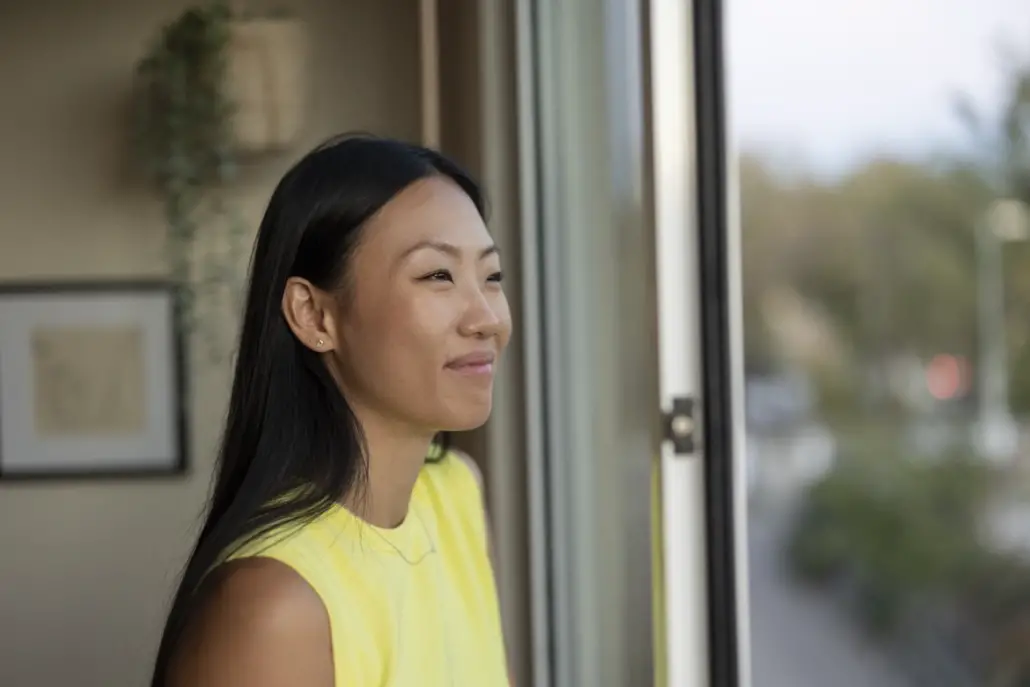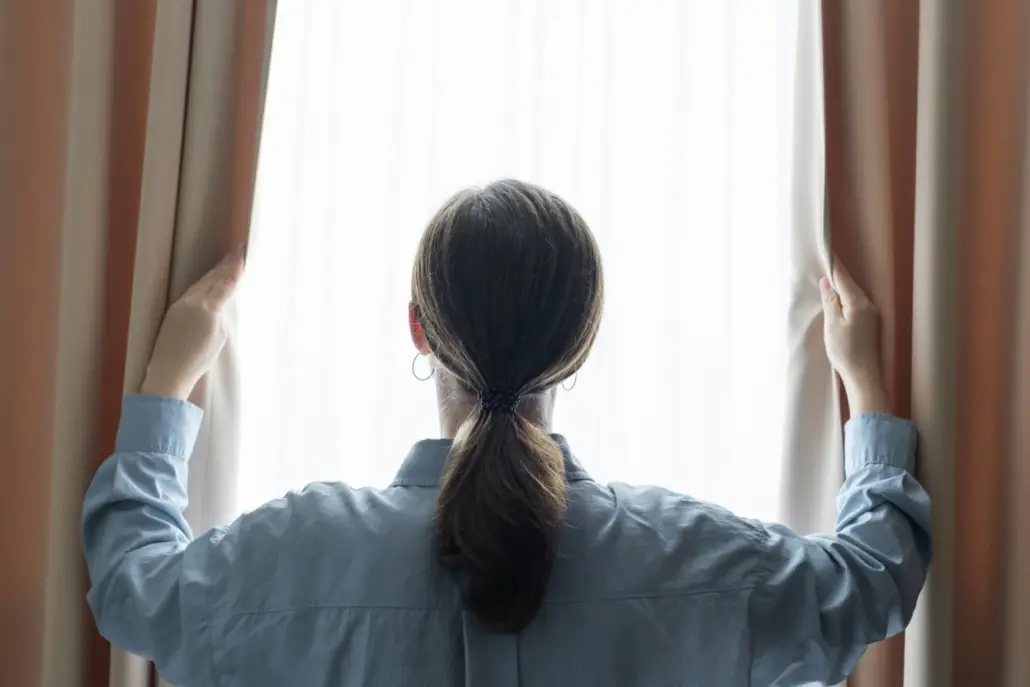Disadvantages of Home Window Tinting

Home window tinting is a simple and inexpensive way to improve your home’s energy efficiency, security, and curb appeal. It entails using window films to cover the interior of your window. Polyethylene terephthalate, which is used to produce plastic water bottles, is also used to make the films. While they are thin, self-adhesive polyester covers, not all are created equal or are worth your money.
Even though they have a lot of benefits, which is why you’re reading this, we’ll examine the disadvantages of having tinted windows in your home. That way, you can learn the correct installation measures and decide if it’s the right choice for your home.
Overview of Ceramic Heaters
A common issue with tinted glass is that it reduces visibility. Low-quality film or improper installation can cause bubbling and peeling, but those problems are rare. Furthermore, window tinting can be illegal, costly, and damaging to your windows. Also, they may interfere with technology.
What Is Home Window Tinting?

Window film installation is another name for residential window tinting. Automobiles are the first thing that comes to mind when discussing window tinting. Nonetheless, window tinting is most useful in the home, not the car. Tinting a window involves adhering a clear coating to the surface of the glass.
This method blocks the sun’s rays and reduces the home’s energy use. However, some items, such as security window film, can cut the possibility of shattered glass and keep your home safe. Some homeowners use decorative window film to improve the visual appeal of old or unattractive glass.
How Does Home Window Tinting Work?
An expert will install a thin layer of tinted film on your windows in a professional home window tinting procedure. Polyester is typically used to create the tints, and then metals or dyes are added for color.
You can protect yourself from harmful UV, IR, and thermal radiation by installing ceramic-based tints on your windows. In either case, you can use window tinting to control the amount of daylight entering your home. The technician will apply a tint according to its light-blocking capabilities.
What to Consider Before Getting Window Tinting

- Health. As tinted windows can filter out UV rays, tinting your windows can be beneficial to your health. Window tinting slows down the aging process and lowers your risk of cataracts and skin cancer, all worsened by solar radiation.
- Safety and visibility. Always keep in mind that darker is not better when tinting your windows. It might reduce visibility when driving and pose a risk to you and other motorists. Tint them, but not too much so that you can see them well. The tinted windows also pose an accident risk if they are tinted too darkly. That holds especially true for nighttime driving because the shade may appear twice as dark. That is true not just at night but also during a storm or while traveling during sunrises and sunsets.
- Local laws. State and local governments can impose fines for excessive or illegal window tinting. Each window will be subject to rules based on local law. For example, your rear windows may be colored significantly darker than your typeface. It’s always wise to look online and learn the exact legislation before paying for a window tint.
- Durability. Depending on the quality of the installation, window tint can last anywhere from a few years to a decade. Window tinting is temporary, although high-quality tints should last at least ten years. Regular maintenance and inspections are necessary to prevent the color from fading or peeling. Be sure to adjust the tint as soon as you discover any issues. Otherwise, the tint’s effectiveness may diminish with time.
Disadvantages Of Home Window Tinting
1. It Isn’t Easy to Install
If you decide to tint your windows, you can save money by doing it yourself. Tinting by yourself will require some knowledge, so if you’re unsure, rather get a professional to install it. Even though window tint has certain drawbacks, those are far outweighed by its many benefits.
Moreover, the drawbacks are manageable, allowing you to get the most out of it. You can find the most reputable and knowledgeable tinting service providers online. Visit websites for window tinting right away to place your order.
2. Warranty Restrictions
Inquire with the window manufacturer first to be sure that the addition of window film will not render the warranty invalid. Because some films can damage certain types of window glass, many companies won’t pay for damage caused by changing windows. If you buy window film from a reputable manufacturer, you should be able to get a warranty that is at least as long as your windows’ warranty.
3. It Could Be Expensive, Depending on How Big Your House Is
You will inevitably need some financial investment in a home renovation project. Even window tinting has its limitations. An expert installation could cost several thousand dollars for a larger home. The return on such an investment may be as little as a couple of years if only long-term energy savings are considered. You can see this in action by reviewing some of our case studies.
4. Some Window Tints Are Substandard
Choosing the appropriate coverage for your windows is essential. There may be better options than budget tints if heat retention, sun management, UV blocking, or any other benefits you seek are vital to you, and choosing the right window film for your area is important. Simply put, pick out a window covering carefully, preferably with the help of an expert.
Benefits of Home Window Tinting

1. Solar Protection
Tinted windows protect electronics, clothes, and furniture from the sun’s damaging UV rays. It is possible to have solar window films that block out 99.9 percent of UV rays. Tinted windows prevent sun damage, which shortens the life of your equipment.
2. Privacy
It is critical to keep your home secure and private. The addition of window tint reduces visibility into a home from the exterior. Window shopping is a common way for criminals to check out possible targets and see if anyone is at home. Nonetheless, most light can’t get into a building with tinted windows because they reflect it like a mirror.
3. Security
If you tint your windows with security film, you’ll be protected from human intruders and disasters, including fires and earthquakes. The safety film will keep the glass from shattering as easily in the event of one of these occurrences. For an intruder to break the glass and enter your home, he would need more time and effort, giving you more chances to prepare for the situation.
Home Window Tinting vs. Blinds
Most homes have some window coverings, and many people choose blinds for their windows because they provide privacy. Window film is a fantastic choice if you want a modern look that will reduce utility costs without compromising style.
Blinds may give your home a more classic appeal while providing total privacy. Window film is ideal for an energy-efficient, affordable treatment that filters light and UV rays to provide excellent privacy.
Home Window Tinting vs. Solar Screen
Mesh is used for making solar screens, and since it is different from glass, it naturally attracts dust and bugs and needs to be cleaned regularly. However, because window film is applied directly to the glass, it leaves no crevices for dirt and debris to accumulate. That makes cleaning simple, so long as you avoid using abrasive cleaners or solutions without ammonia.
While solar screens can reduce the heat entering your home from the sun, they do little to improve cooling efficiency. Insulating window film is made to do just that. Window film keeps heat from coming in and insulates the glass so cold air can’t escape.
There are benefits to installing window tint as well as solar screens. Although window film provides more advantages, solar screens are less complicated to set up and more appealing.
Home Window Tinting vs. Window Film
Window tinting and window film are two different things, but they are sometimes used interchangeably. Many window films are clear; their main purpose is to save energy and block UV rays. Window tinting, on the other hand, changes the color or tone of the windows.
A wide variety of window film is available, each with its look and degree of tint. Some window films are opaque and reflective, while others are nearly transparent. The adhesive is unnecessary because the window film bonds directly to the glass.
Less tint is desirable for films for use in a home’s windows. Tinted window films are used less frequently because many want to see more out of their windows. The window film is barely noticeable after installation.
Home Window Tinting FAQs
Q: What Is the Best Tint Percentage for House Windows?
Your specific needs will determine what proportion of window tint is suitable for your home. You need window tinting services with at least 50% coverage to lessen the amount of sunlight and heat entering your home.
For safety reasons, window tint percentages of roughly 50% are ideal for residential properties. Window tinting for privacy or decoration typically ranges from 20% to 30%. If the tint percentage you choose is too high, the window warranty might get nullified.
Q: How Long Does Window Film Last?
The quality and components utilized in making a window film determine its durability. Most of them last between 10 and 20 years. However, the force applied to the film will determine whether this time is adequate.
Q: Can You Tint House Windows Yourself?
Hire a professional. Tinting is a service many individuals choose to do professionally because of the low cost. Due to the high level of detail and expertise required for the tint materials, DIYing a proper installation is difficult.
Q: Which Tint Is Best for Your Home?
Metallic films have a far longer lifespan than other options. These films use very thin metal particle layers to reflect light. Metallic window tints are also highly resistant to the damaging effects of sunlight. Metalized window films have the appearance and functionality of a reflective surface.
Having both is crucial, as you’ll want to prevent the sun’s rays from your home while still having adequate lighting. Internal reflection from metallic window films aids in temperature regulation. Thus, you will save money on heating and cooling costs.
Q: What Can I Use on Windows to See Outside but No One Can Look In?
When more light comes in through one side of the window, the reflective finish of the one-way, privacy window film creates the illusion of a one-way mirror. That implies that you can see well through the window from the inside, but nobody outside can see in during the day. You can install one-way window film on windows leading into areas where you’d like some extra seclusion during the day.
Q: Is It Rewarding to Tint House Windows?
That’s right, it is. Tinting is best for older windows because they don’t have the low-emissivity coating of newer ones. Tinting your home’s windows will boost energy efficiency by blocking the sun’s rays during the warmer months and keeping warm air inside during the cooler ones.
Also, what you can expect depends on how much sun you get. The amount of sunlight coming in through the windows affects how well the film works to save energy. The first windows to be filmed are the south, west, and east.
If you have limited resources, the south and west-facing windows should be your top priorities. Also, consider the passive solar that enters your home through those sunny windows, especially if you live in a cooler area. Assess that and then decide if the savings you’ll get in the summer are worth it.
Q: Is Window Tinting Better Than Blinds?
Window film is often more affordable than alternatives like blinds or drapes. Tinting a window takes less time than installing shades. Without the need for expensive modifications, window film can be put into any glass, regardless of its form or size. Window blinds, in particular, are easily broken and expensive to replace or repair.
Q: Can You See Through the Home Window Tint at Night?
The direction of light passing through reflective window film determines which side is visible at any time. If the light outside is brighter, you will see through the film in the opposite direction. It is possible to see through window film at night from the outside if the interior is brighter than the exterior.
Q: What’s the Cost of Tinting Windows All Around?
Apart from factors unique to your home, the size, shape, and ease of access to your windows will play a role. Experts estimate that it costs around $120 to $300 to have a standard 3-foot by 5-foot window tinted. Labor costs attract an extra cost per square foot, increasing the total price of window film from $2 to $15 per square foot.
Again, that amount depends on your area’s market rates. You can determine the return on investment for projects like energy-efficient window tinting in three to four years. Often, utilities provide rebates for window films and tints, and local governments may waive or lower taxes in exchange.
Conclusion

Home-tinted window films are a great option for many people. Window tinting is an excellent choice if you want to save money, feel safer in your home, or relax more comfortably.
You could get started on this project this weekend because of how cheap it is and how quickly you get results. But first, pay attention to the disadvantages and engage technicians during installation.


